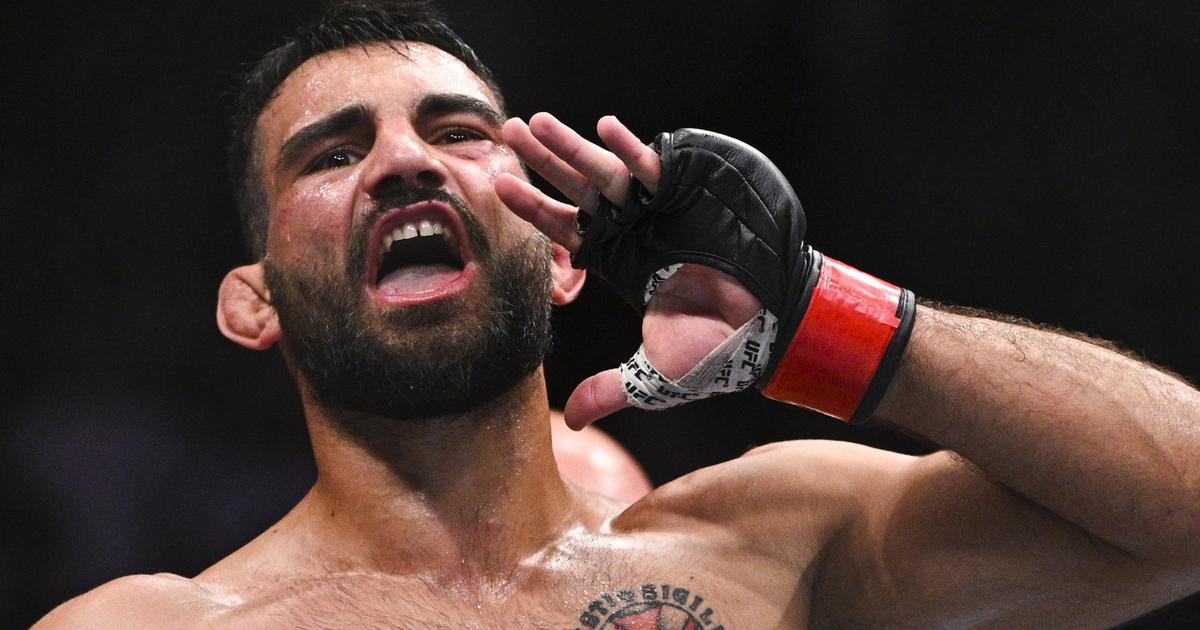Enlarge image
Jo-Wilfried Tsonga after the last match of his career
Photo:
GONZALO FUENTES / REUTERS
After around three and a half hours, more than 15,000 fans on the Philippe-Chatrier court couldn't believe their eyes.
Jo-Wilfried Tsonga surprisingly had the chance to force a fifth and decisive set.
His opponent in the first round of the French Open, the clearly favored Casper Ruud from Norway, had just given up his serve.
But then, out of nowhere, Tsonga's body went on strike.
again.
Enlarge image
A typical picture: Jo-Wilfried Tsonga is treated during a game
Photo: PASCAL ROSSIGNOL / REUTERS
The Frenchman suddenly felt a stabbing pain in his right shoulder and was only able to continue playing in pain.
Ruud ended the game after 3:49 hours - and with it Tsonga's tennis career.
The now 37-year-old, who had announced before the game that he wanted to leave "heart and soul" on the pitch, cried even before the last point.
"I'm saying goodbye to my great companion, tennis," Tsonga then said in an emotional speech.
He's always been fortunate enough to do what he loves.
"I hope the world can find as much peace as I have today," Tsonga said.
Paris had prepared for this departure of a great tennis player, who was denied the very important triumphs, but who moved many people, fans and competitors, during his years on the tour.
Under the motto "Merci Jo" the most beautiful moments of his career flickered across the screens.
In a video message, Novak Djokovic spoke of a "great loss for tennis".
The course of the encounter (final result: 7: 6, 6: 7, 2: 6, 6: 7), a tennis drama without a happy ending, is symbolic of the Frenchman's entire career.
It was characterized by ups and downs, successes and setbacks.
Injuries have been a constant companion in his 19-year professional career, as they were against Ruud.
A herniated disc, shoulder and back problems, knee injuries.
Tsonga's body took its toll on the rigors of professional sports early on.
"It's time to stop"
The spectators in the largest stadium on the complex, including French tennis heroes such as Henri Leconte, Fabrice Santore and Amelie Mauresmo, must have guessed that Tsonga would no longer be competitive.
His farewell had been apparent for a long time.
In January 2018, the Frenchman was still one of the 20 best players in the world.
But a meniscus injury forced him to take a month-long break.
He only returned to the tour in September, and Tsonga temporarily fell back to 262nd place in the world rankings.
A brief increase in performance, crowned by two tournament victories in his home country in 2019, could not hide the approaching end.
This year Tsonga won only three games.
"Both my head and my body told me it's time to stop," he said before the tournament.
His big breakthrough is now almost 14 years ago.
Enlarge image
Jo-Wilfried Tsonga: His star rose at the 2008 Australian Open
Photo: Lucas Dawson/Getty Images
In 2008, a largely unknown Frenchman stormed into the final of the Australian Open.
It quickly became clear to many what great potential was hidden behind the massive body.
Tsonga, 1.88m tall and 93kg, managed to win over the neutral crowd in Melbourne.
In the run-up to the final, which he clearly lost to Novak Djokovic, he dominated the headlines.
He openly displayed his emotions on the pitch at important moments and made the spectators feel sorry for him.
Greatest adversary of the »Big Four«
In addition to his broad grin, it was above all his playing style that brought him sympathy.
Hard serves and spectacular net attacks, which he often ended with a so-called slam dunk in the best Pete Sampras manner.
Despite a weakening backhand, he subsequently developed into a regular opponent of the »Big Four«.
Whether Djokovic, Rafael Nadal, Roger Federer or Andy Murray, he inflicted bitter defeats on the quartet over time.
Enlarge image
Spectacle on the pitch: Tsonga completes a rally at Wimbledon with a slam dunk
Photo: Julian Finney/Getty Images
In the 2011 Wimbledon quarter-finals, he was the first professional ever to turn a 2-0 set deficit against Federer.
With the help of his hard groundstrokes, he drove the Swiss to despair on his favorite surface.
He celebrated his greatest tournament victories at the Masters events in Paris (2008) and Toronto (2014).
Tsonga is a tennis hero in France.
For his services he was awarded the National Order of Merit.
But at home his name is also associated with a great disappointment: When Tsonga rushed to the top of the world alongside his compatriots Richard Gasquet, Gael Monfils and Gilles Simon, it seemed only a matter of time before a Frenchman almost Defeated 40-year Grand Slam curse.
Since Yannick Noah's triumph at the French Open in 1983, no Frenchman has won in Melbourne, Paris, London or New York - not even Tsonga.
Success in the 2017 Davis Cup and winning the silver medal in doubles at the 2012 Summer Olympics in London came as little consolation to many fans back home.
Enlarge image
The greatest success of his career: triumph at the ATP Masters in Toronto
Photo: Steve Russell/Toronto Star/Getty Images
At the end of his career, Tsonga can still look back on a proud record: 18 tournament wins, 52 Grand Slam participations and prize money of more than 22 million euros.
A little could even be added.
On Thursday, Tsonga will compete alongside Gasquet in the doubles competition.
One would like to wish him that the body would cooperate a bit more.









